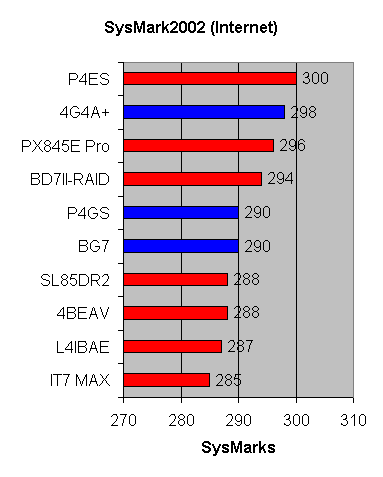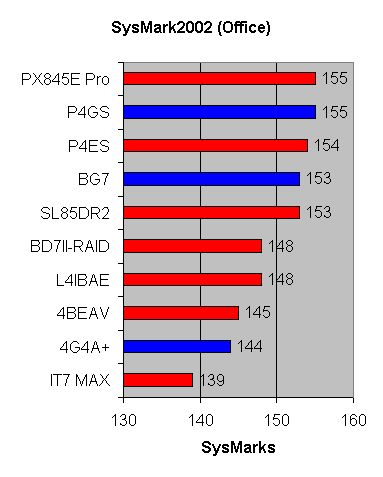| pcstats test system
specs: |
|
|
computer hardware: |
|
| processor: |
pentium 4 1.6a |
| clock speed:
|
16 x 133 = 2.13
ghz |
| motherboards: |
epox 4beav
epox 4g4a+
iwill p4gs
albatron
px845epro
abit bd7ii-raid
abit it7-max
iwill p4es
abit bg7
soltek sl-85dr2
ecs l4ibae |
| chipset: |
intel i845e
intel
i845g |
| videocard: |
albatron geforce4 ti4600 |
| memory: |
256mb crucial pc2700 |
| hard drive:
|
40gb samsung
sp4004h 7200 hdd |
| cdrom: |
nec 52x cd-rom |
| floppy: |
panasonic 1.44mb floppy drive |
| heatsink: |
retail intel hsf |
| powersupply: |
antec 400w psu |
| software
setup |
windowsxp pro
intel inf
4.00
detonatorxp 29.42 |
| benchmarks |
sysmark 2002
business winstone 2001
content creation 2001
winbench 99
sisoft sandra
2002 pro
pcmark2002
3dmark2001se
quake iii arena |
* - when
viewing the graphs, all the motherboards using the i845e chipset are represented
with a red line and the ones using the i845g are using blue lines.
SysMark2002 is more of an extension of SysMark2001 rather
then a whole new benchmark. The applications used during testing have been
updated and most importantly for AMD users, the new SysMark2002 uses the Windows
Media Encoder 7.1 which supports the AthlonXP's SSE instructions.

Here we see that all the boards perform very close to each
other; the difference between lowest and highest performing is just 15
points.

The same trend continues in the second half of SysMark2002
Office Benchmarks. We're not really sure why the IT7 MAX lags behind though -
perhaps it is the USB devices strain on system resources used in this half of
the test (just a guess).
